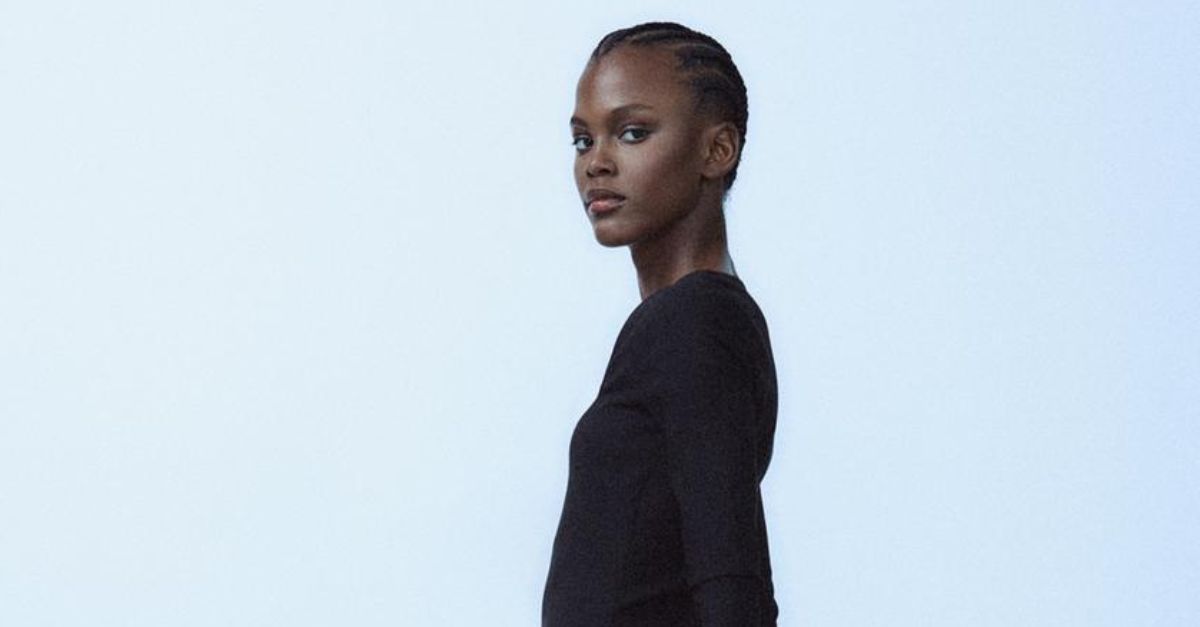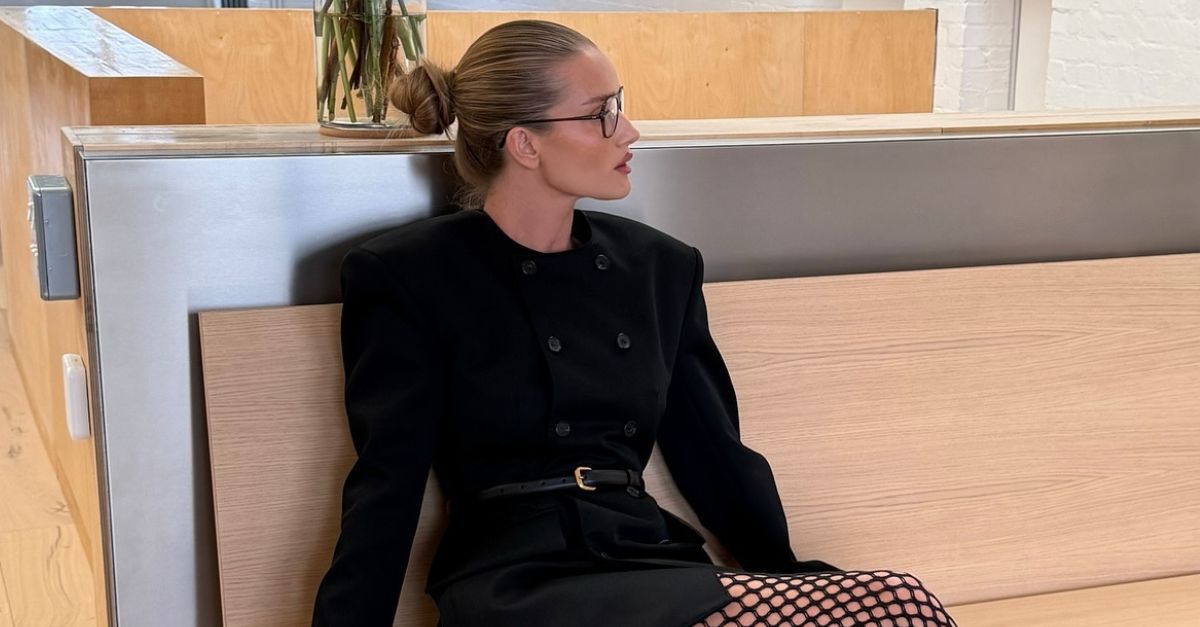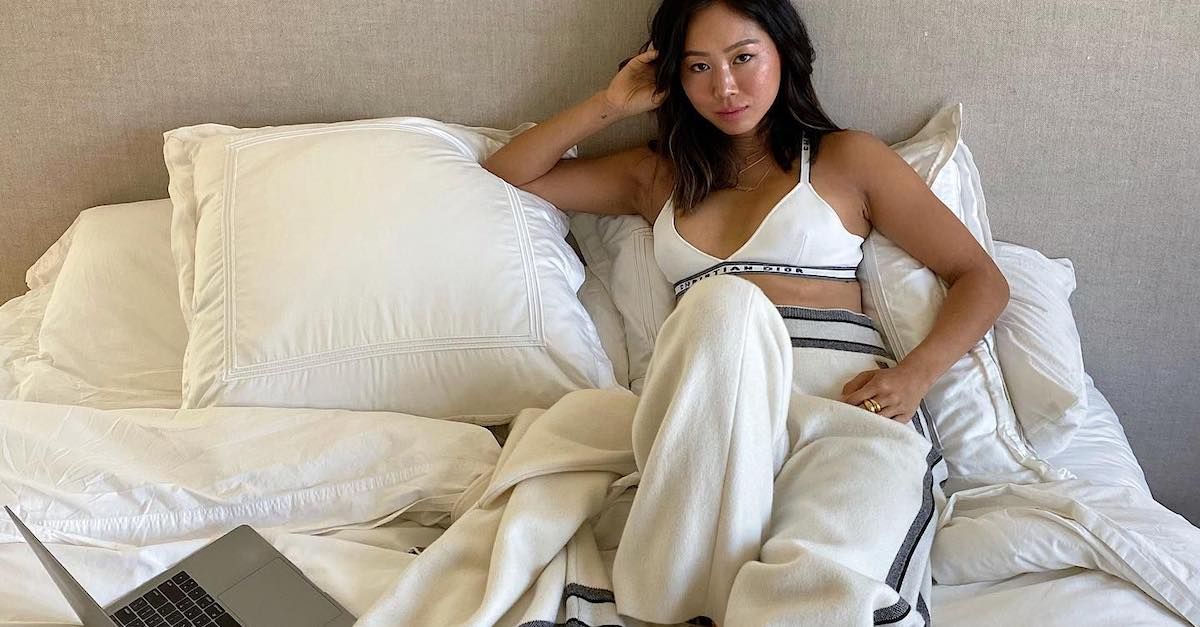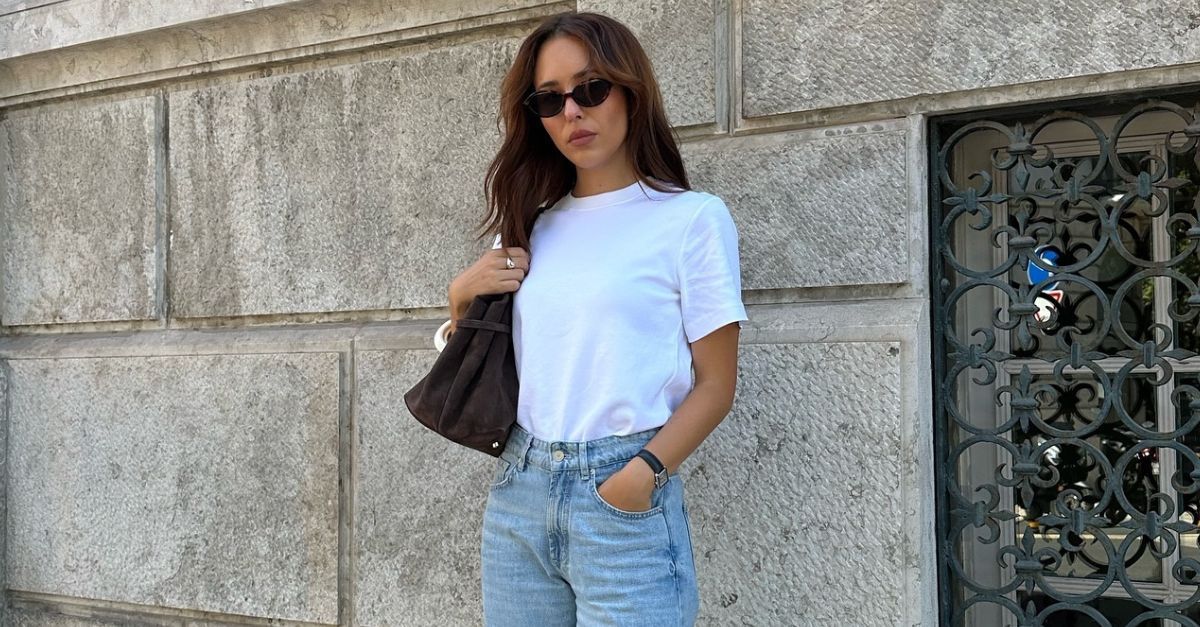How ‘Ultimate’ Was Made for Freaky Friday

Pink Slip, the rock group comprised of Lindsay Lohan, Christina Vidal, and Haley Hudson in the seminal 2003 teen film Freaky Friday might just be the best fictional band of our generation. They were effortlessly cool, but still just high schoolers dealing with detention and mom drama like the rest of us. When you think of this classic comedy-fantasy, the group’s performance of “Take Me Away” is usually the first to come to mind; but for me, it’s their other song (they only have two): “Ultimate,” which appears in the end credits.
Perhaps it’s because of my pop-loving tendencies, but its upbeat, catchy melody just stuck with me in perpetuity, and its repetitive lyrics made it easy to remember. I get it; “Ultimate” is maybe more saccharine and romantic than the angsty, anthemic lyrics in “Take Me Away.” But it still goes hard—and there’s enough room to love both songs. The image of Pink Slip rocking out barefoot in lace dresses is just as iconic to me as the famous baseball tee, studded belt, and cargo pants Lohan wears while in character. Outside of the movie, “Ultimate” made its rounds on Disney Channel and Radio Disney (RIP), and clips occasionally grace my Twitter and TikTok feeds. Today, it has over 21 million streams on Spotify.
“When we heard the song, it fit that energy we were going for. Lyrically, it totally worked,” Freaky Friday’s music supervisor Lisa Brown Leopold tells ELLE.com.
More From ELLE

It’s no question that the love for these songs is inextricably tied to the love for Freaky Friday itself, which turns 20 today. Based on the book by Mary Rogers, and a remake of the 1976 film, Disney’s version directed by Mark Waters follows a straitlaced psychologist, Tess (Jamie Lee Curtis), and her punk teenage daughter Anna (Lohan), who switch bodies under an accidental spell. The movie lands in an interesting place in Lohan’s filmography—five years after The Parent Trap, one year before Mean Girls—and featured her singing before she launched her pop music career. It remains deeply nostalgic for millennials and older Zoomers alike, likely thanks to its edgy aughts fashion, relatable mother-daughter storyline, and infectious music.
Waters, a rock fan and music lover, knew he wanted a guitar-heavy sound for the film. It was the early 2000s, on the heels of the ’90s grunge era, “and guitars were kind of falling out of favor in a weird way,” he explains. “The rise of hip-hop and EDM were looming, and pop was redefining itself as something that was basically more synthesized.”
So when it came to forming Pink Slip, he looked to acts from the riot grrrl movement, like Sleater-Kinney and Bikini Kill. “And I thought, ‘Yeah, let’s have this band be of that ilk,’” Waters recalls. Avril Lavigne, who was coming up at the time and released “Sk8er Boi” the year prior, was also a big influence. Waters wanted to embrace these grungy elements to exaggerate the differences between Anna and Tess. In fact, he had to rework the original script to make Anna and her mother seem more like opposites.
“The original screenplay had [Anna] being a journalist at the school paper who wanted to get an interview with Gwen Stefani,” he says. “So I thought, ‘Well, so she’s kind of a nerd who likes rock and roll, but she’s still a nerd and her mom’s a nerd. So what’s the fun point in that?’”
Thus, the revised screenplay included the band’s House of Blues performance and a “really great shredding guitar solo” in the climax—which happens during “Take Me Away.” (Musician and producer Amir Derakh, the guitarist for the band Orgy, wrote the solo for the song.) In the film, it’s Jamie Lee Curtis who plays the solo from the wings, as Anna and Tess’ bodies are still swapped by the time of the big performance. But Lohan wanted to play one too—enter “Ultimate.”
“[The] reason ‘Ultimate’ was even found and created and tailored the way it was, was because Lindsay worked really hard to learn to play the guitar in the early scenes in the movie. And she spent a lot of time with lessons and really loved it. And part of the joke of the movie was that every time she’s about to play the solo, the power cuts off. She’s always denied getting to play the solo.”
Lohan was “annoyed,” Waters recalls. “And so I said, ‘Well, you know what, let’s do an end credit song and we’ll do a solo for you.’”
This content is imported from youTube. You may be able to find the same content in another format, or you may be able to find more information, at their web site.
Lisa Brown Leopold had quite the task on her hands. Her work with sourcing songs required listening to loads of physical CDs—this was before streaming and digital music—to find the right tunes. For the closing credits spot, she reached out to major music publishers, which represent songwriters, for something that could work. “I would go through hundreds of CDs, literally sitting on my floor,” she says.
As most music supervisors do, she brought her selects to the director, along with producer Andrew Gunn. “And we would have listening sessions and talk about the songs.” (That’s what they did for “Take Me Away,” too.) They landed on the track composed by Jeff Coplan and Robert Ellis Orrall.
“‘Ultimate’ was just like, ‘This was the best track I heard,’” Waters recalls. “And then we worked with them and worked with Amir [Derakh] to re-tailor the track to make it more of a rock song and make it fit for Lindsay.” The demo leaned more pop at first, but then Derakh worked his magic with another guitar shredding solo. He even taught Lohan how to jump down to her knees while playing. As a seasoned musician, Derakh advised the actors during rehearsals on “how to be a rock star,” Brown Leopold says.
The addition “made Lindsay that much more excited to do all of the band practice knowing that, ‘Oh yeah, I get to do this big solo at the end and have a song,’” Waters says. “And then the song ended up being a really catchy song and a really fun sequence for the end credits, just to be able to cut to the various players and all that and have a little fun at the end.”
Prior to filming, prep included real-life band rehearsals for six weeks, three times a week, leading up to the shoot, according to Brown Leopold. First, they recorded the songs—the soundtrack was produced by Michael Simpson for Hollywood Records—and then the cast would practice playing with the track. (Lohan and Hudson had to learn how to play guitar, while Vidal, their drummer, and bassist were already experienced musicians.) “We really worked hard to make it this authentic garage band,” she remembers. “And Lindsay was brand-new to the studio and she wasn’t polished, but that worked for the character.”
“I really feel like during that band rehearsal is when I really fell in love with the song,” Brown Leopold says. “The song checked off all the boxes when I heard it, but it really wasn’t until we were doing it that it just felt right.”
Filming that performance occured during the last week of production, Waters recalls. On set, “everyone’s enjoying the feeling that we’ve kind of done a good job with the movie. We already felt like it had come together nicely. And we didn’t really do elaborate coverage or anything. We just had two cameras on dollies kind of zipping back and forth doing rock video-type coverage of the band, then of the audience and rocking out with the band.” They even had to stick kneepads on Lohan because she did multiple takes of the knee dive during her guitar solo.
Looking back, Waters admits that it might not have made logical sense for Pink Slip to perform at Tess’ wedding, but he ultimately thought, You know what, who cares? “The audience has a smile on their face and they’re going to enjoy it. So we’re going to justify having this extra song.”
Twenty years later, “Ultimate” and its dark sister “Take Me Away” still hit. “It was such a special project, and it definitely was representative of the time,” says Brown Leopold. “We put it together as the soundtrack, but it’s cool that each song feels timeless and you can listen to them [separately] now.” Brown Leopold, now the executive music director for Disney Channel, currently works on High School Musical: The Musical: The Series starring Olivia Rodrigo. She sees threads of that 2000s punk feel in Rodrigo’s own music, and in bands like The Linda Lindas. “When I think about Olivia doing her stuff now, I feel like Freaky Friday was part of that path.”
While parts of the film, like its portrayal of Asian stereotypes, haven’t aged well, the songs and the mother-daughter relationship at the heart of the film are everlasting. When Waters was offered the job, his wife was pregnant with their first child. “And we knew it was a girl, and she said, ‘This is a sign. You have to do this movie,’” he recalls. He even made a cameo with the baby at the end of the film.
“It’s a movie that’s in some ways dedicated to my first daughter,” Waters says. “And I ended up having two daughters. So it’s something that’s resonated with my wife and both of them as well.” (Of course, the kids have seen the movie. Brown has also watched it with her son, who is now 15.)
Many of us who grew up loving Freaky Friday and seeing ourselves in Anna are probably closer to Tess’ age now. (Curtis was about 45 when the film was released; the oldest millennials in 2023 are 42 years old.) Even if not all of us are mothers, maybe we’re at least old enough to understand what our own moms were going through when we look back at our rebellious teenage years. We didn’t need to switch bodies; with the help of time, we ultimately started to see life through her eyes.
Freaky Friday is streaming on Disney+.
Watch
Erica Gonzales is the Senior Culture Editor at ELLE.com, where she oversees coverage on TV, movies, music, books, and more. She was previously an editor at HarpersBAZAAR.com. There is a 75 percent chance she’s listening to Lorde right now.




